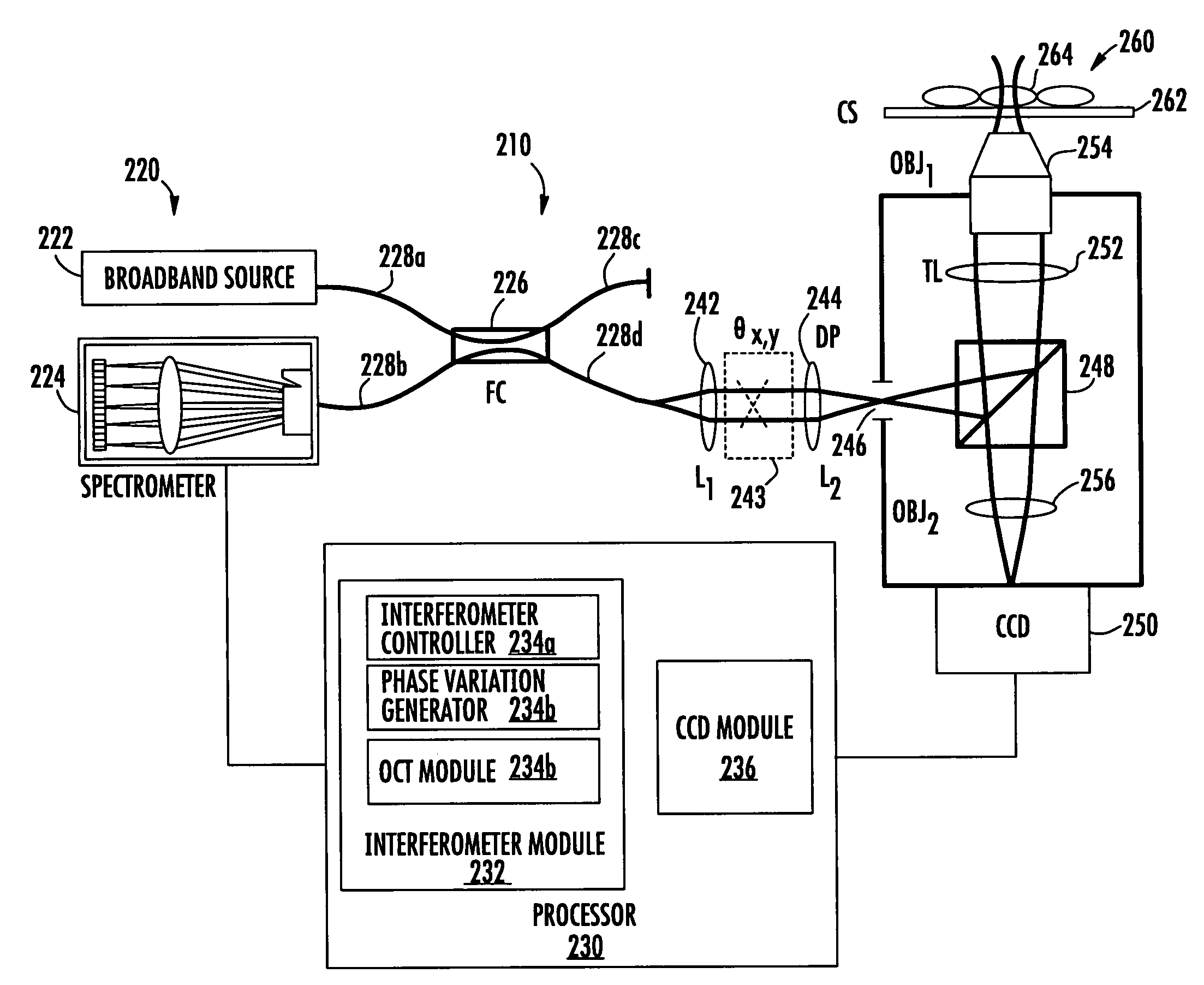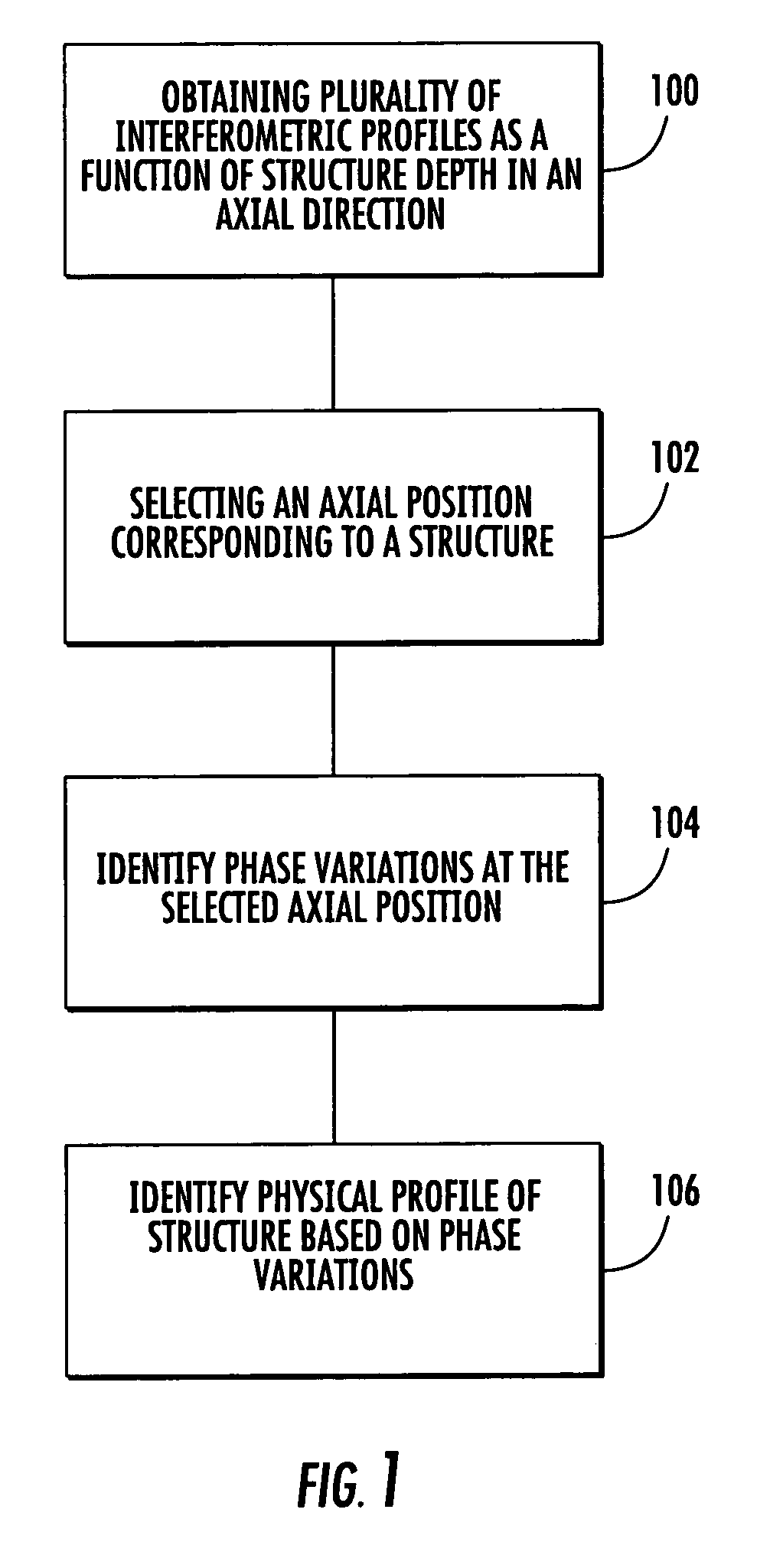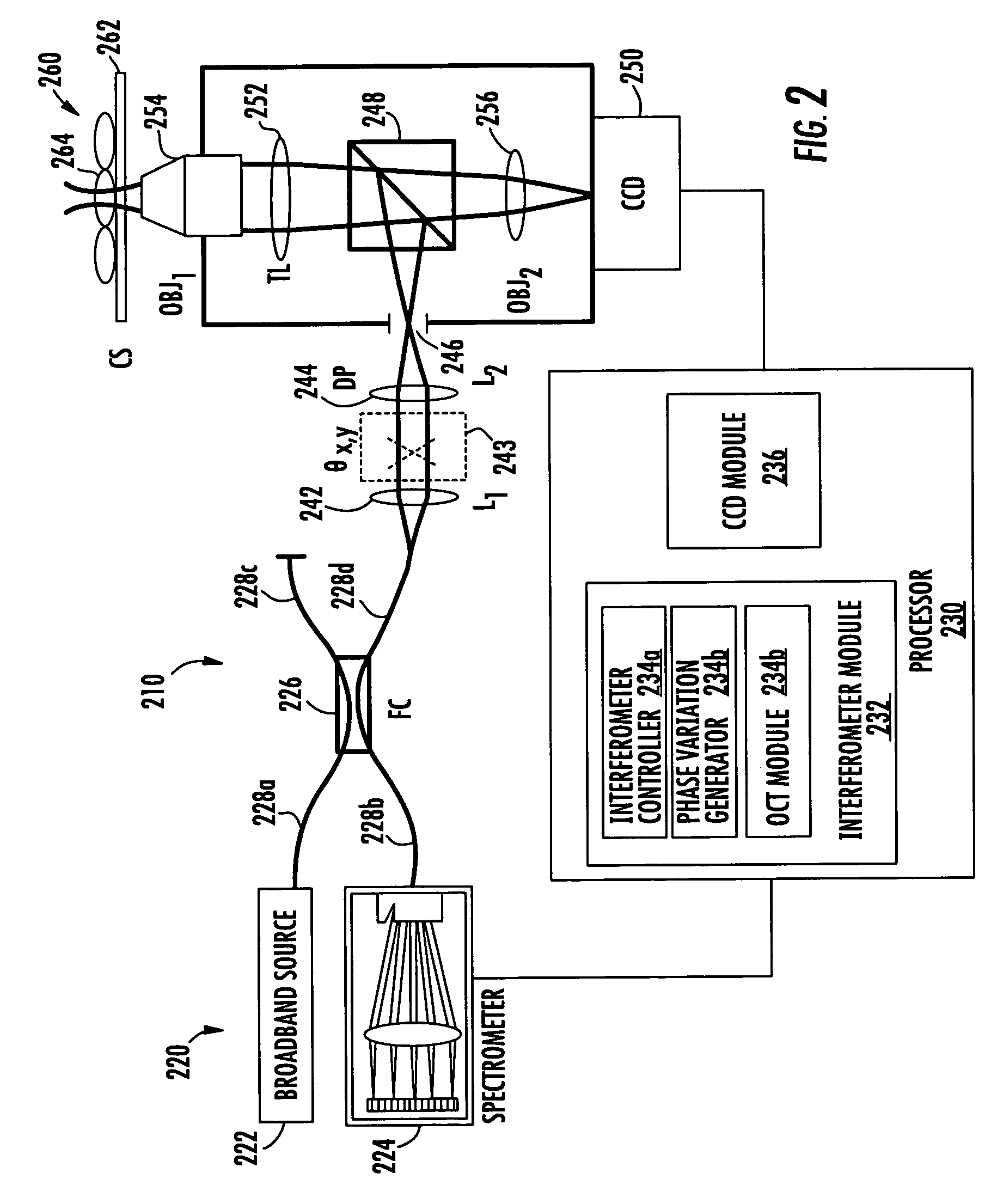Methods, systems and computer program products for characterizing structures based on interferometric phase data
a phase data and structure technology, applied in the field of imaging, can solve the problems of limited resolution of current oct techniques, inability to resolve structures of less than 1-10 m, and few scientific tools which are capable of noninvasively acquiring quantitative information about cell surface profiles, displacements, and motions on the nanometer scal
- Summary
- Abstract
- Description
- Claims
- Application Information
AI Technical Summary
Benefits of technology
Problems solved by technology
Method used
Image
Examples
Embodiment Construction
[0008]According to embodiments of the present invention, structure profiles from optical interferometric data can be identified by obtaining a plurality of broadband interferometric optical profiles of a structure as a function of structure depth in an axial direction. Each of the plurality of interferometric optical profiles include a reference signal propagated through a reference path and a sample signal reflected from a sample reflector in the axial direction. An axial position corresponding to at least a portion of the structure is selected. Phase variations of the plurality of interferometric optical profiles are determined at the selected axial position. A physical displacement of the structure is identified based on the phase variations at the selected axial position.
[0009]According to some embodiments of the present invention, a system for identifying structure profiles from optical interferometric data includes an interferometer configured to acquire a plurality of broadba...
PUM
 Login to View More
Login to View More Abstract
Description
Claims
Application Information
 Login to View More
Login to View More - R&D
- Intellectual Property
- Life Sciences
- Materials
- Tech Scout
- Unparalleled Data Quality
- Higher Quality Content
- 60% Fewer Hallucinations
Browse by: Latest US Patents, China's latest patents, Technical Efficacy Thesaurus, Application Domain, Technology Topic, Popular Technical Reports.
© 2025 PatSnap. All rights reserved.Legal|Privacy policy|Modern Slavery Act Transparency Statement|Sitemap|About US| Contact US: help@patsnap.com



